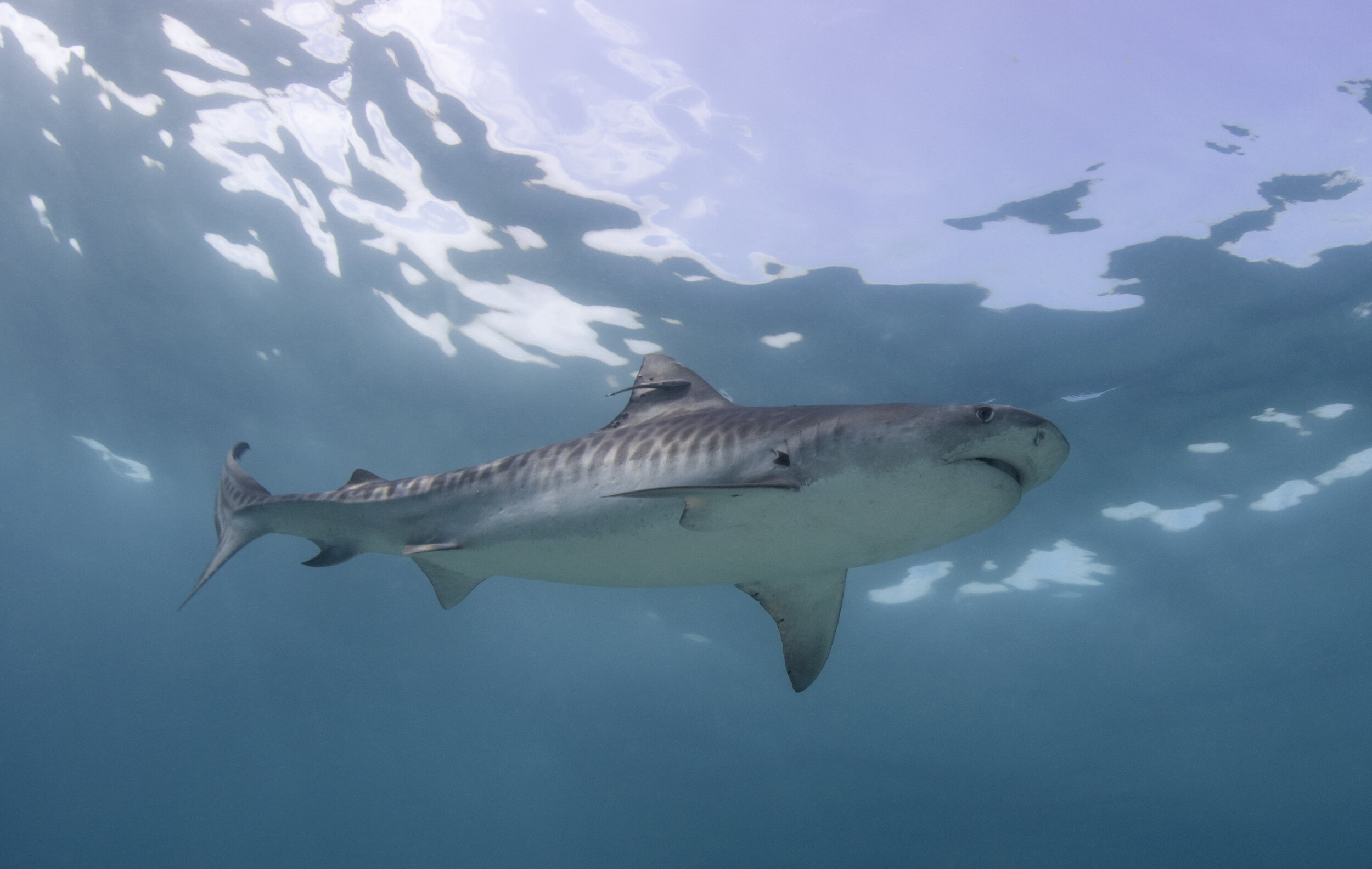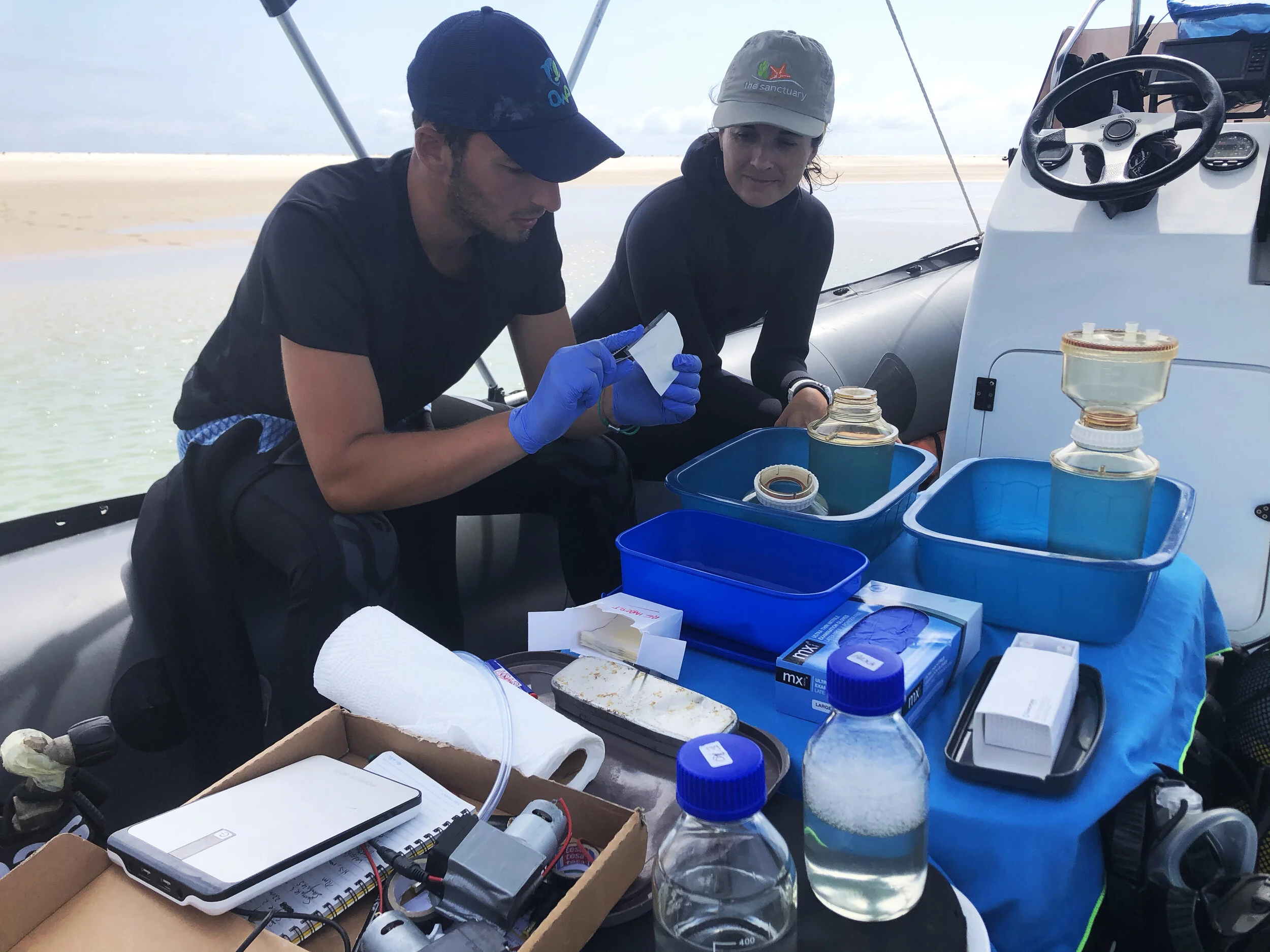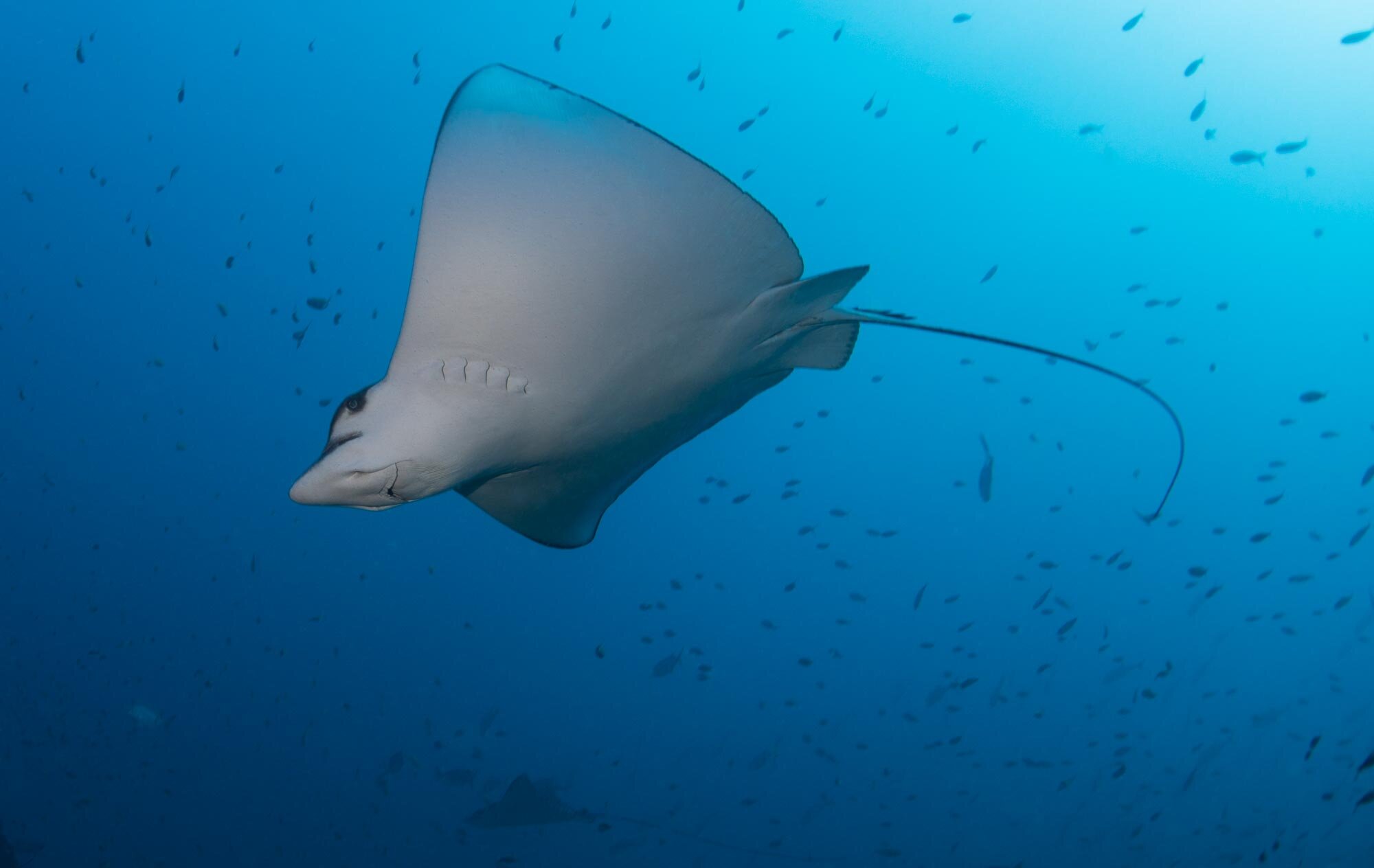
Mozambique Projects.
Elasmobranch Census
What’s this project about?
Overfishing has led to the severe decline of sharks and rays on a global scale. Southern Mozambique is a hotspot for elasmobranchs, yet detailed and current census information – including species diversity, distribution, and abundance – are lacking.
Effective management and protection require this type of baseline information, therefore MMF scientists are using a combination of innovative research techniques to rapidly gather much-needed census data for shark and ray species throughout the Inhambane Province.
Key successes to date
MMF have maintained the longest running and most diverse elasmobranch sightings catalog in Mozambique.
Our research team have been refining the use of remote (un-baited) camera traps to collect video data in the absence of divers and have begun the collection of seawater samples in the Bazaruto Seascape to be used in eDNA analysis.
MMF scientists have conducted over 200 BRUV deployments in Mozambican coastal waters. These data contributed to the global shark census known as Global Finprint - an assessment of the abundance and diversity of sharks on coral reefs worldwide, the findings of which were published in the esteemed journal Nature
Latest elasmobranch press releases
Highlighting MMF’s research & conservation work within the Bazaruto Seascape.
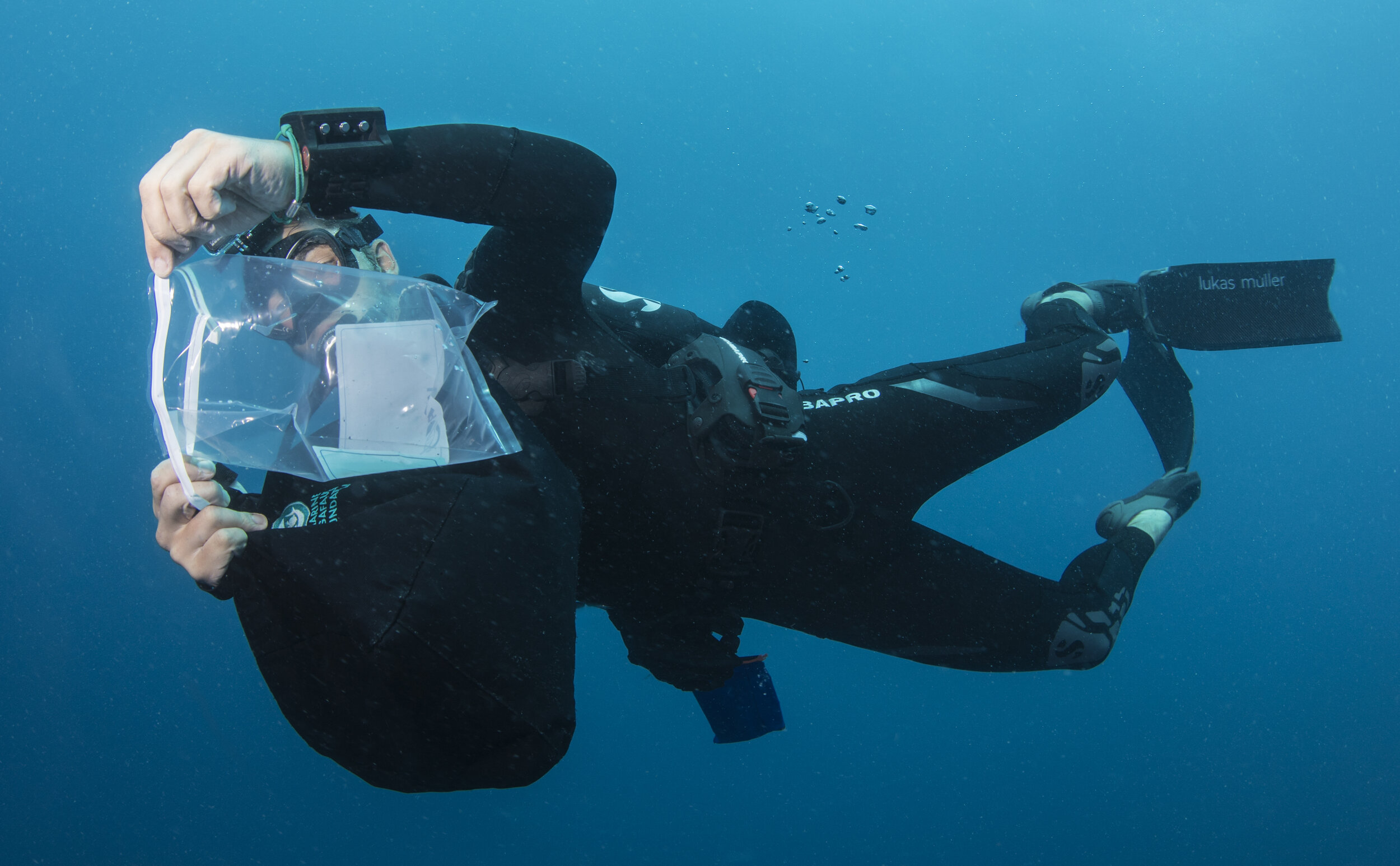
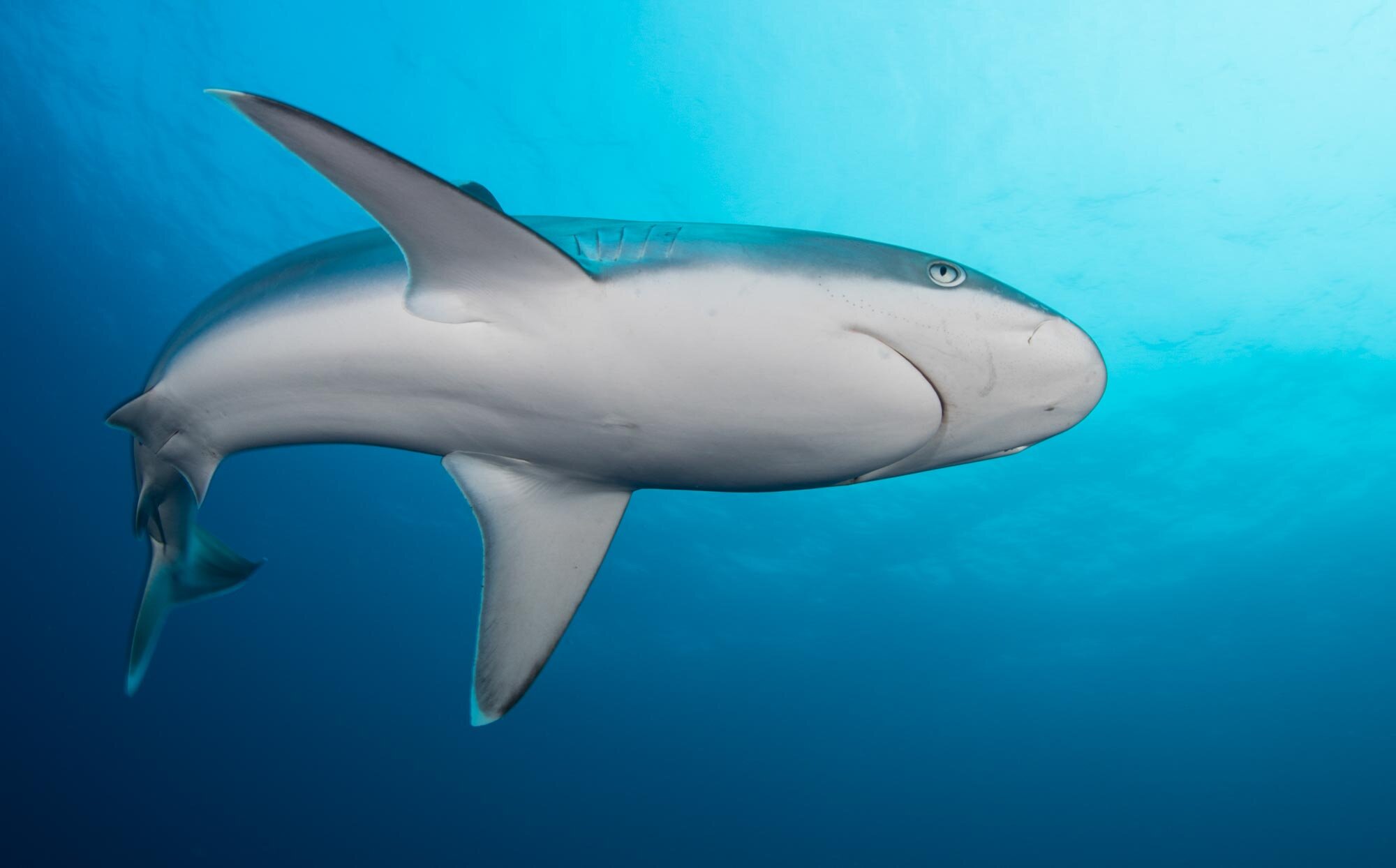
Project Overview.
Globally, a quarter of all shark and ray species are considered threatened with extinction by overfishing. Moreover, a recent worldwide study co-authored by MMF scientists surveyed 371 reefs across 58 countries to assess shark abundance. Sharks were not observed on almost 20% of these reefs, indicating a widespread decline. We are now using similar techniques for detailed surveys of the Mozambique coast.
Shark & Ray Research in Mozambique
The Inhambane Province is recognized as an area of outstanding shark and ray diversity, supporting numerous species of ecologically important elasmobranchs, largely as a result of MMFs long-running research programs in the region. MMF scientists have collected over a decade of elasmobranch sightings data during survey dives (up to 20 years in some regions). These data have enabled estimates of abundance and trends over time, and identified a number of key aggregation sites and important habitats for manta rays and whale sharks. At the same time, our researchers were collecting abundance data on other shark and ray species encountered on these survey dives.
Aims of the Mozambican Elasmobranch Census
We are now collating and adding to this dataset to create detailed census information to identify and document where certain species can be found, and how many of them inhabit particular areas at certain times, particularly for endangered and data-deficient species. Unfortunately, many of these species are still caught in artisanal and commercial fisheries throughout the province, particularly as bycatch in non-selective fishing methods such as gill-nets. This poses a primary threat to elasmobranch populations in southern Mozambique, and to the overall health of regional marine ecosystems.
How this Helps Shark & Ray Conservation
Effective management and protection require baseline data on species diversity and abundance, along with the identification of critical habitats and aggregation sites. However, for mobile, rare or elusive species this information can be difficult and time-consuming to collect through diver surveys alone. Therefore, MMF scientists are developing and integrating emerging and innovative research techniques to rapidly gather much-needed census information for sharks and rays throughout the Inhambane Province. This includes the use of baited remote underwater video (BRUV) set-ups, remote cameras, and environmental DNA (eDNA) in addition to in-water and aerial surveys. A particular focus area is the Bazaruto Seascape.
Research Techniques.
In addition to continuing our long-term diver surveys, we are expanding our use of remote monitoring techniques on reefs in the Inhambane Province.
Data from these combined research methods allow us to establish an understanding of the abundance and diversity of elasmobranch species throughout the province. We utilize a multi-pronged research strategy, including the use of:
Baited remote underwater video (BRUV) cameras. BRUVs are unmanned drop cameras that use bait to attract predatory species, which can then be identified and quantified during video analysis.
Remote ‘camera traps’. These un-baited cameras can be placed on the seabed or reef by divers, left to record for ~2 hours, and collected. This allows for species counts and the observation of animal behavior in the absence of divers.
Environmental DNA (eDNA). eDNA techniques enable the detection of species through tiny molecules of DNA that are present in the water column in the form of waste products, skin cells, or mucus of marine organisms. This is an emerging and promising technique that can detect multiple species without direct observation.
Employing multiple complementary techniques allows our researchers to compare and contrast techniques, effectively fact-checking our own data to ensure we are obtaining the most accurate information possible.
Processing eDNA in the Sanctuary with Sanctuary manager Taryn.
Project Leaders
Dr Andrea Marshall
Principal Scientist
Andrea has been conducting research on marine megafauna in Mozambique for 20 years, with an emphasis on sharks and rays. As a conservation biologist she focuses predominantly on research questions related to the effective management and conservation of threatened species.
Dr Stephanie Venables
Senior Scientist
Stephanie has been working with MMF since 2014. Her research involves applying different research techniques as conservation tools, using methods such as telemetry (tagging), population genetics, and demographic modeling to better understand species and the way they interact with their environment.
Anna Flam, MSc.
Research Manager
Anna is MMF’s research manager in Tofo Beach. She also manages the Thailand/Myanmar manta ray database and serves as the global coordinator for MantaMatcher. Anna’s work involves collecting vital information on shark and ray population size, structure, and connectivity, which is used to guide the development of effective management and conservation strategies.
Lukas Mueller, MSc
Research Scientist
Lukas’ PhD research aims to reveal bull shark movement patterns within and between marine protected areas in Mozambique, to provide managing entities with key insights for effective conservation strategies. A particular focus is the Bazaruto Seascape region.
Nakia Cullain, MSc.
Nakia is a marine ecologist who has been working in Mozambique in 2016 as the director of the Zavora Marine Lab. She joined the MMF team in 2020. Nakia leads various research projects in Zavora, with a particular focus on sharks and rays. Her main objective is to improve marine conservation and management of marine resources in Mozambique through the investigation of artisanal and industrial fishing and its impacts on threatened species.
Publications
MacNeil MA, [others], A Flam, AD Marshall, A Watts, [others] (2020) Global status and conservation potential of reef sharks. Nature 583: 801–806.
